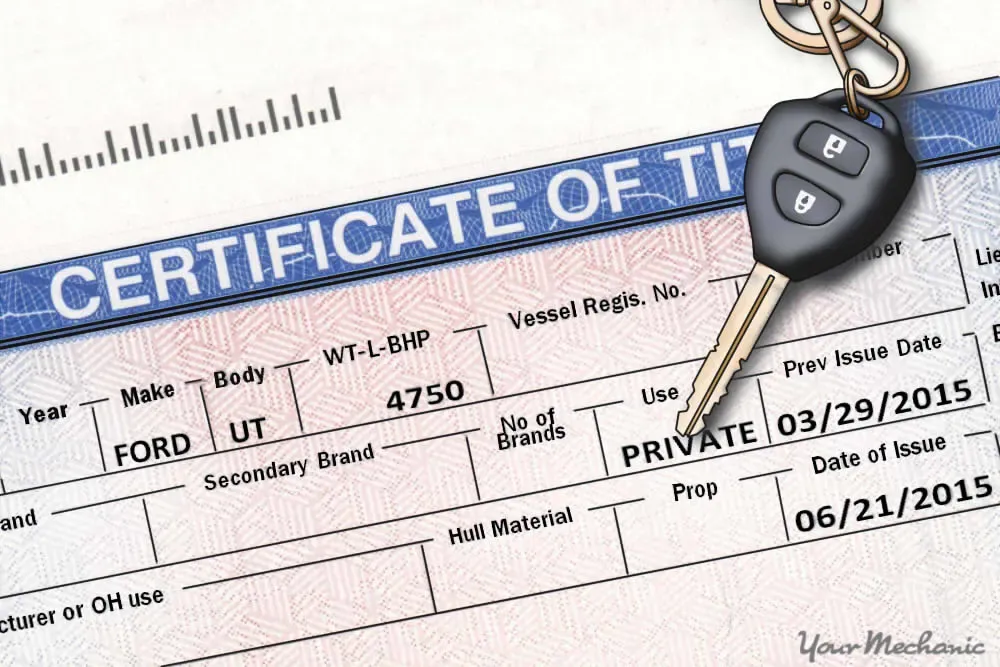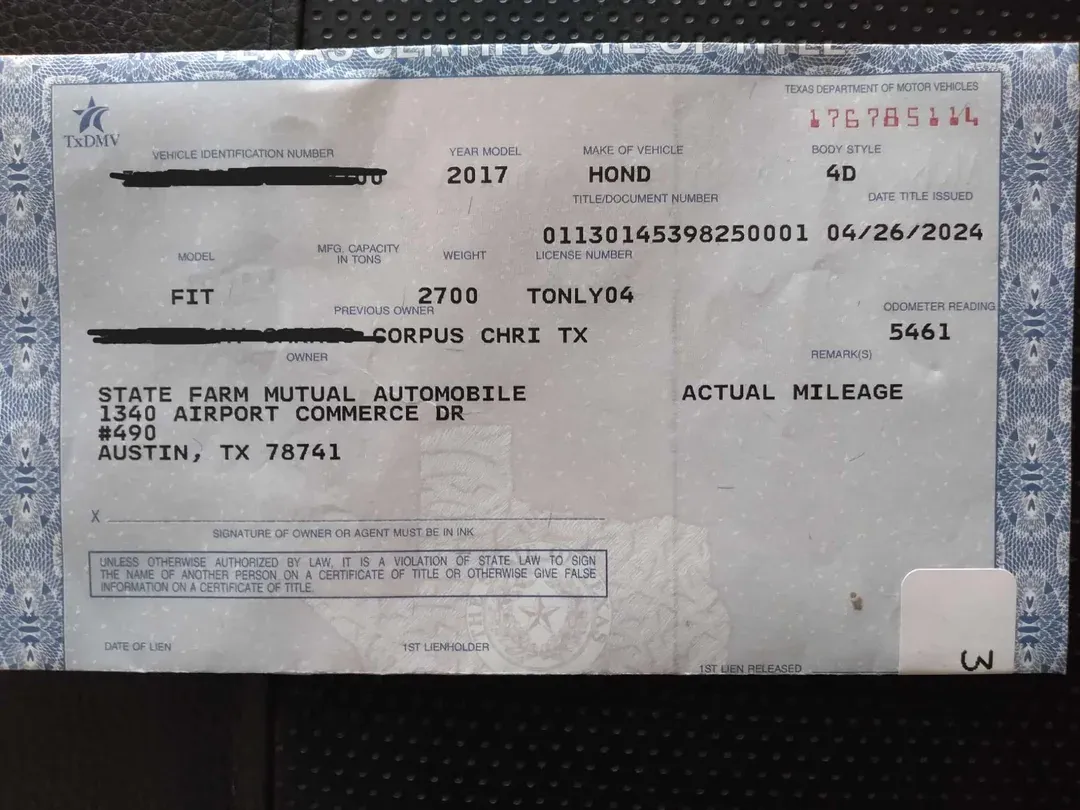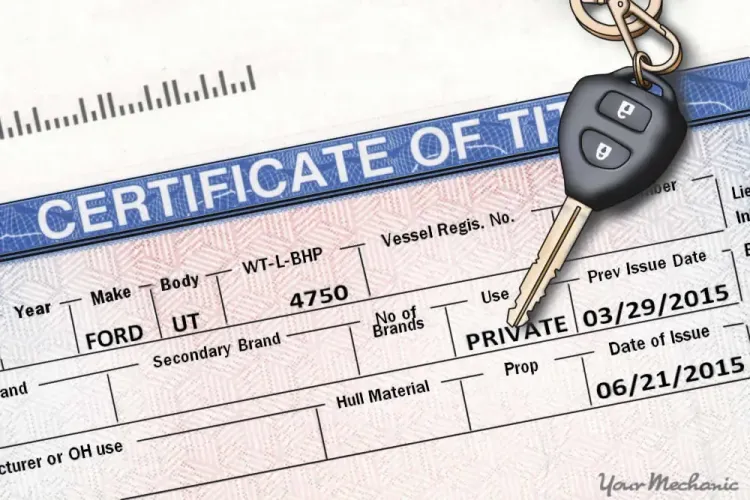If you're looking at buying a car in Texas or maybe diving into the world of vehicle titles, you might have come across the term "blue title." The blue title is a key component of vehicle ownership and transactions, but what does it really mean? Let’s dive deep to find out what's a blue title in Texas and why it's such an important piece of paper when it comes to your wheels.
Definition of a Blue Title
A blue title in Texas refers to the original title of a vehicle. It's essentially the vehicle's birth certificate—a legal document that identifies the vehicle, its owner, and its history. Unlike other types of titles that may indicate damage or specific conditions, the blue title represents a clear, unblemished history. It’s often called the "Blue - Original Title," emphasizing its authenticity and the absence of significant history issues.
- Official Vehicle Record: The blue title acts as the legal ownership document for the car. Without it, proving you own a vehicle can become incredibly difficult.
- Title Colors and Significance: Different colors of titles in Texas indicate different statuses. The blue title implies that the car has no major history problems, distinguishing it from the likes of orange or brown titles that suggest otherwise.
- Importance of Authenticity: If you're buying or selling a car, having a blue title can mean less paperwork and fewer headaches, as it indicates that the vehicle’s past is straightforward.
Importance of a Blue Title in Vehicle Transactions

The importance of a blue title in Texas vehicle transactions cannot be understated. A blue title is like having a clean bill of health for your vehicle—it signifies that the car has no unresolved claims or history of salvage, rebuilding, or any other issues that could compromise its worth or safety.
Why Buyers Should Look for a Blue Title
- Simplifies Insurance: Most insurance companies prefer vehicles with a blue title, as it means there have been no major past incidents involving accident damage or flood damage.
- Trust in Quality: Buyers look for a blue car title because it represents the original condition. There’s no need to worry about hidden issues, scrap metal damage, or costly repairs lurking in the vehicle’s history.
- Easier Financing: Lenders often prefer financing vehicles with a blue title. With a clear title, vehicles are easier to assess for value, and the buyer’s credit score is less likely to face unexpected challenges due to title issues.
Difference Between Blue Titles and Other Title Types
There’s often confusion between a blue title and other types of vehicle titles in Texas. The color and type of a title can reveal a lot about the vehicle’s history.
Blue Title vs. Salvage Title
- Salvage Title: This is a dark-pinkish title that indicates the vehicle has been in a major accident or suffered significant damage, such as flood or hail. The cost of repair exceeded its value, meaning the car was effectively declared a total loss.
- Blue Title Advantage: Unlike salvage vehicles, those with a blue title have no major history of damage. This distinction impacts everything from insurance rates to resale value.
Blue Title vs. Rebuilt Title
- Rebuilt Title: This title means the vehicle was previously deemed non-repairable or salvage but has since been rebuilt to roadworthy standards. The color of the title usually changes to reflect this.
- Blue Title Edge: A blue title gives a car an edge in the market. Rebuilt titles suggest that a vehicle, while potentially fixed to working condition, still has a history—a blue title, on the other hand, signals clean history.
What is the Process of Obtaining a Blue Title?
Eligibility Requirements
Not every vehicle is eligible for a blue title. The eligibility criteria include having a vehicle that has not suffered accident damage beyond reasonable repair. The vehicle must have:
- A clear history, free of salvage or rebuilding incidents.
- Proof of ownership such as a certificate of title bond.
- No record of being dismantled for scrap metal.
Application Process
To obtain a blue title, you'll need to follow a specific process with the Texas Department of Motor Vehicles:
- Complete the Application: Fill out Form VTR-130-ND, which is the application for a Texas Certificate of Title.
- Provide Proof of Ownership: This can include the original title or a duplicate title application if the original has been misplaced.
- Pay Fees: Pay the required fees at your county tax office. These fees cover title processing and inspection fees if applicable.
- Title Inspection: An on-site mobile inspection may be required to ensure the vehicle’s condition matches what’s stated in the documents.
Transferring Ownership with a Blue Title
Transferring ownership of a vehicle with a blue title is generally easier compared to vehicles with salvage or rebuilt titles. Here’s how to do it:
- Bill of Sale: Ensure you have a digital purchase agreement or physical bill of sale to document the transaction.
- Sign the Title: Both the previous owner and the new owner must sign the back of the blue title to complete the transfer.
- Visit County Office: Submit the title transfer paperwork at the local county clerk’s office.
Significance of Checking Title Status Before Purchase
What's a blue title in Texas and why does it matter? Before purchasing a vehicle, especially one that claims to have a blue title, it's important to verify that information. Checking the title status helps ensure you know exactly what you’re getting.
How to Check a Vehicle's Title Status
Before buying a vehicle, it's essential to verify that it truly has a blue title. Here are some steps you can follow:
- Online Title Check: Utilize the Texas DMV online portal to verify the vehicle’s title status. This is crucial for avoiding issues with a salvage vehicle title disguised as a blue title.
- VIN Verification: Use the Vehicle Identification Number (VIN) to check the title record and owner record. This helps uncover any title brands or damage history.
Having definitive proof of the title status gives you confidence that the car doesn’t have a murky past. If a car does not have a blue title, you could be buying into potential future headaches involving insurance, registration, or resale.
Understanding Title History
Title history refers to all past transactions involving a vehicle, including ownership changes, damage claims, and repairs. Understanding a car’s title history is vital in protecting yourself from buying a problem.
- Past Claims: Knowing whether a vehicle has been involved in a major incident, such as flood or hail damage, can influence your decision.
- Title Brands & Issues: Pay attention to title brands like salvage, rebuilt, or non-repairable, as these can affect everything from insurance claims to resale value.
The blue title’s primary advantage lies in its absence of title brands, which ensures a clean ownership record and makes for a stress-free purchase.
Information Included on a Blue Title
A blue title isn’t just a piece of paper—it's a complete record that includes important details about the vehicle:
- Vehicle Description: This includes the make, model, year, and VIN.
- Title Colors: The blue title color differentiates it from titles like orange or brown, which carry different legal meanings.
- Owner Information: Details of the rightful owner and any previous owner are clearly mentioned to ensure a transparent ownership trail.
- Title Brands: Absence of title brands is a positive indication when the color is blue, showing that the vehicle isn’t rebuilt or salvage.
Additionally, having a blue title means that you’re getting a car without any legal obligations or lienholders, simplifying future transactions and ownership transfers. The details on the title are your key to understanding everything from the car’s first registration to its current status.
Legal Requirements for Blue Title Vehicles
It’s important to comply with the legal requirements involved in owning a vehicle with a blue title. Here are some of the requirements:
- Proof of Identity: To transfer or apply for a blue title, you need acceptable proof of identity. This can include a Texas driver’s license or another state-approved ID.
- Inspection Requirement: In some cases, the car may need to undergo an obligation inspection to verify its condition. This is particularly necessary if the car was purchased out of state.
- Title Bond Requirement: In situations where a vehicle’s ownership is in question or the title has been lost, you may need a certificate of title bond or surety bond to obtain a blue title.
These steps ensure that vehicles on Texas roads are safe and legally compliant, making the blue title more than just a document—it’s your key to legal peace of mind.
Transferring Blue Titles: Things to Keep in Mind
If you’re in the process of buying or selling a car, transferring a blue title requires attention to detail. Here are some key things to consider:
- Accurate Information: Always ensure that the information provided on the title, including the vehicle identification number, mileage, and owner’s name, is accurate.
- Signatures: Both the seller and buyer must sign the back of the title. Missing signatures can cause major delays or even rejection of the transfer.
- Lien Release: If the car was financed and there was a lienholder, make sure to include a lien release letter showing that any loans against the car have been cleared.
A smooth title transfer is essential for avoiding future complications. Always double-check that all paperwork is complete before heading to the county tax office.
The Blue Title’s Impact on Resale Value
What's a blue title in Texas, and how does it impact a vehicle's resale value? A blue title can significantly affect the resale value of a vehicle. Here’s how:
- Higher Value: A vehicle with a blue title is typically valued higher compared to one with a salvage or rebuilt title. This is because there’s no history of damage that might compromise the vehicle’s integrity.
- Ease of Sale: Cars with a blue title tend to sell faster because there are fewer concerns about their history. Buyers have more confidence in purchasing a car with a clear, straightforward past.
- Insurance and Financing: Vehicles with a blue title are easier to insure and finance. Insurance companies and lenders are more comfortable dealing with cars that have a clean title status.
Why a Blue Title is a Preferred Choice for Buyers

A blue title is the preferred choice for both buyers and sellers in Texas. Here’s why:
- Clear Ownership: A blue title represents clear ownership without any legal entanglements. It ensures that the vehicle has no hidden liens or unresolved issues.
- Less Paperwork: With a blue title, there’s no need to go through additional vehicle inspections or legal documentation processes that are common with salvage or rebuilt titles.
- Better Financing Options: As mentioned earlier, vehicles with a blue title are much easier to finance. Lenders view these vehicles as less risky, which means lower interest rates and better loan terms.
Whether you’re buying from a licensed motor vehicle dealer or an individual, a blue title provides the confidence that you’re making a sound investment.
Conclusion
Understanding what's a blue title in Texas is crucial for anyone involved in buying, selling, or owning a vehicle. A blue title represents a clean history, hassle-free transactions, and a smoother ride when it comes to both insurance and resale. It’s a vital component that ensures your vehicle is free from the complications associated with salvage or rebuilt titles.
So, next time you’re eyeing a new set of wheels, remember the value that comes with that little blue piece of paper. It’s not just about the car—it’s about the history, the peace of mind, and the confidence that comes with knowing you have a vehicle with a clean slate.




